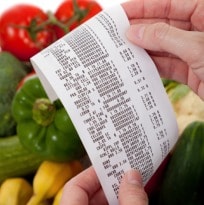Global food prices declined for the first time in three months as lower prices for cereals, sugars, oils and meat outstripped gains in dairy products, the UN's Food and Agriculture Organisation (FAO) reported. The Rome-based agency said Thursday its food price index averaged 203.4 points in January, which is 1.3 percent below December and 4.4 percent below January 2013.The index measures monthly changes in international prices of a basket of meat, dairy, cereals, oils and fats, and sugar. "We're seeing lower prices due to abundant supplies, but stronger upturn in demand, such as an increase in the pace of imports from Asia, could limit the decline," said FAO economist Abdolreza Abbassian.Sugar and vegetable oils fell 5.6 percent and 3.8 percent respectively. Bumper cereal crops, meanwhile, helped to bring down cereal prices, which were 1.6 percent lower than in December and as much as 23 percent lower than in January 2013. Even meat prices, which had strengthened over the past few months, fell slightly in January. "The only notable exception was a rise in dairy prices," said Michael Griffin, FAO's dairy and livestock market expert.
The FAO dairy price index registered a 1.3 percent increase in January to 267.7 points, largely reflecting strong demand, especially from China, North Africa, the Middle East and Russia. Overall world cereal production for 2013 was stronger than anticipated, to a record 2,502 million tonnes, up 8.5 percent from 2012."The bumper cereal crop in 2013 would help in replenishing world reserves," FAO said in its news release. The UN agency estimates the harvest could reach 573 million tonnes, 13.5 percent higher than in the previous season. At this level, the stocks-to-use ratio for global cereals would top 23.5 percent in 2013-14, its highest value since 2002-03 and well above its historical low of 18.4 percent registered in 2007-08.
The FAO dairy price index registered a 1.3 percent increase in January to 267.7 points, largely reflecting strong demand, especially from China, North Africa, the Middle East and Russia. Overall world cereal production for 2013 was stronger than anticipated, to a record 2,502 million tonnes, up 8.5 percent from 2012."The bumper cereal crop in 2013 would help in replenishing world reserves," FAO said in its news release. The UN agency estimates the harvest could reach 573 million tonnes, 13.5 percent higher than in the previous season. At this level, the stocks-to-use ratio for global cereals would top 23.5 percent in 2013-14, its highest value since 2002-03 and well above its historical low of 18.4 percent registered in 2007-08.
Advertisement













